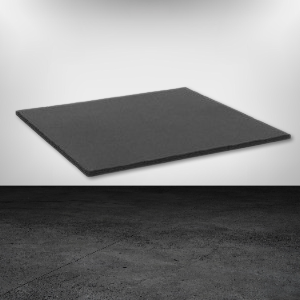NBR RUBBER SHEETS
Nitrile Butadiene Rubber (NBR) sheets, also known as Buna-N or Nitrile rubber, are widely used in various industrial applications due to their excellent resistance to oils, fuels, and chemicals. Here’s a detailed specification, classification, and description of NBR rubber sheets:
Specification
- Material:
- Nitrile Butadiene Rubber (NBR)
- Properties:
- Hardness: 40-90 Shore A (commonly available in 60-70 Shore A)
- Tensile Strength: 10-25 MPa
- Elongation at Break: 200-600%
- Specific Gravity: 1.00 – 1.20
- Compression Set: < 25% (22 hrs @ 70°C)
- Tear Strength: 15-40 N/mm
- Temperature Range:
- -30°C to +120°C (-22°F to +248°F)
- Can withstand short periods up to 150°C (302°F)
- Thickness:
- Typically available in thicknesses ranging from 1 mm to 50 mm.
- Width and Length:
- Standard widths: 1 meter, 1.2 meters, 1.5 meters
- Length: Usually in rolls of 10 meters, 20 meters, or customized as per requirements.
- Color:
- Black is the most common color, but other colors such as white, grey, and custom colors can be available upon request.
- Finish:
- Smooth or fabric finish on one or both sides.
Classification
- By Hardness:
- Soft: 40-60 Shore A
- Medium: 60-80 Shore A
- Hard: 80-90 Shore A
- By Application:
- General Purpose: Used in a variety of general applications.
- Oil Resistant: Formulated for applications requiring resistance to oils, fuels, and petroleum-based fluids.
- Industrial: High-strength and high-resilience sheets for industrial use.
- Food Grade: Compliant with food safety regulations for use in food processing industries.
Description
- Applications:
- Sealing and Gaskets: Used in seals and gaskets requiring excellent oil resistance, such as automotive gaskets and seals.
- Fuel Systems: Ideal for use in fuel systems, including fuel tanks, hoses, and seals, due to its resistance to oils and fuels.
- Hydraulic and Pneumatic Systems: Suitable for use in hydraulic and pneumatic seals and O-rings.
- Automotive: Used in various automotive applications including hoses, seals, and gaskets.
- Industrial: Widely used in industrial applications such as conveyor belts, rollers, and seals requiring oil resistance.
- Marine: Used in marine environments due to its resistance to saltwater and oil.
- Advantages:
- Excellent Oil Resistance: Superior resistance to oils, fuels, and petroleum-based fluids.
- Good Weather Resistance: Resistant to weathering and ozone, making it suitable for outdoor applications.
- Flexibility: Maintains flexibility over a wide temperature range, making it suitable for dynamic applications.
- Durability: Long-lasting performance in harsh environmental conditions.
- Cost-Effective: Offers a cost-effective solution for many applications compared to other rubber materials.
- Limitations:
- Temperature Limitation: Limited high-temperature resistance compared to some other rubber materials.
- Chemical Resistance: Limited resistance to strong acids, bases, and solvents.
- Maintenance and Care:
- Regularly inspect for signs of wear, cracking, or hardening, especially in harsh environmental conditions.
- Clean with mild soap and water; avoid using harsh chemicals or solvents.
- Store in a cool, dry place away from direct sunlight and ozone sources to extend the life of the rubber sheets.
